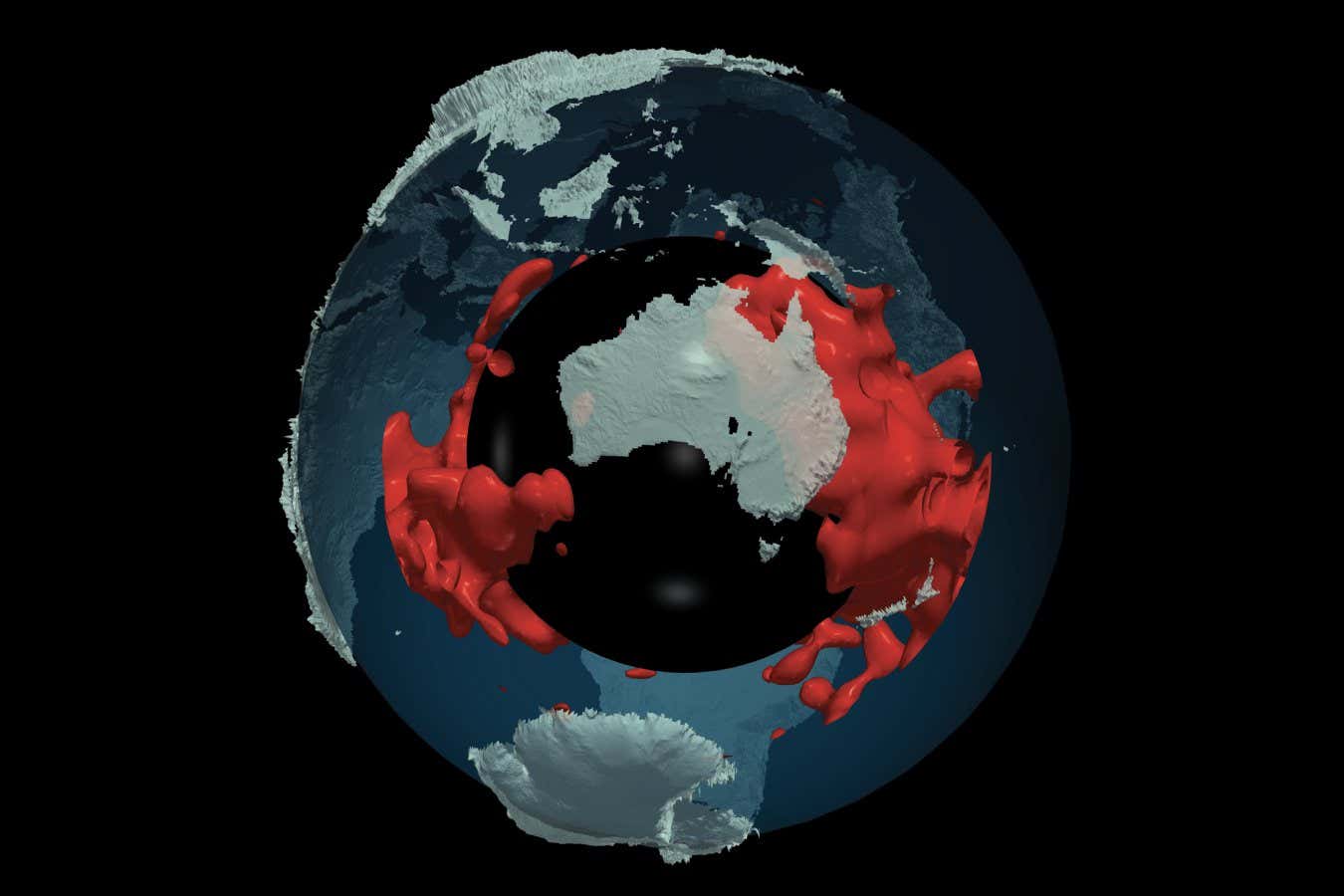New measurements suggest mysterious continent-sized masses in our planet’s lower mantle may be extremely stable features
By James Dinneen
22 January 2025
Strange continent-sized structures (in red) lurk beneath the surface of the planet
Edward Garnero; S. W. French, B. A. Romanowicz, Geophys. J. Int. 199, 1303, 2014.
Two huge masses deep within Earth may have remained stable for billions of years, surviving the powerful churn of the interior, according to an analysis of seismic waves ringing throughout the planet.
“When there is a big earthquake, the whole Earth will expand and contract like a bell,” says Arwen Deuss at Utrecht University in the Netherlands. “Earth becomes a musical instrument.”
Read more
Record-breaking drill core reaches 1.2 kilometres into Earth's mantle
Advertisement
Decades ago, measurements of such seismic waves identified two strange continent-sized structures, one beneath the Pacific Ocean and one beneath Africa. They extend nearly 1000 kilometres up from the outer core into the lower mantle, a slowly-moving layer between Earth’s crust and core.
Because seismic waves pass more slowly through these objects, they are called “large low-shear-velocity provinces”, or LLSVPs. But not much else about their composition or origin is known.
To gain more information, Deuss and her colleagues analysed how these regions dampened the energy of seismic waves, in addition to changing the velocity of the waves. Such measurements can reveal information about the temperature and makeup of the LLSVPs, as well as their shape and size.
